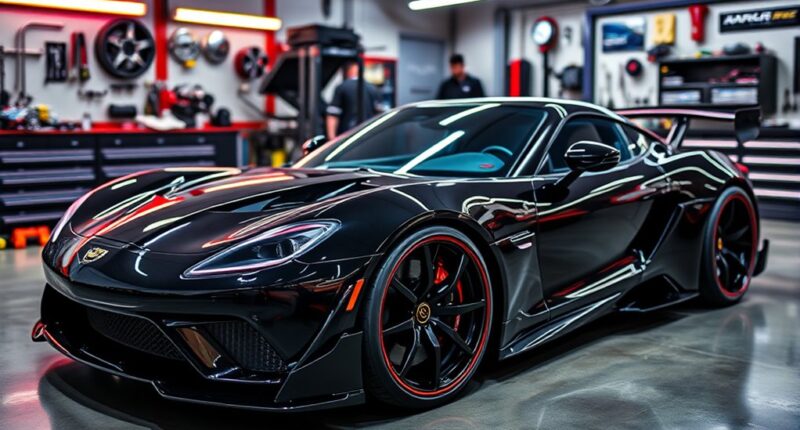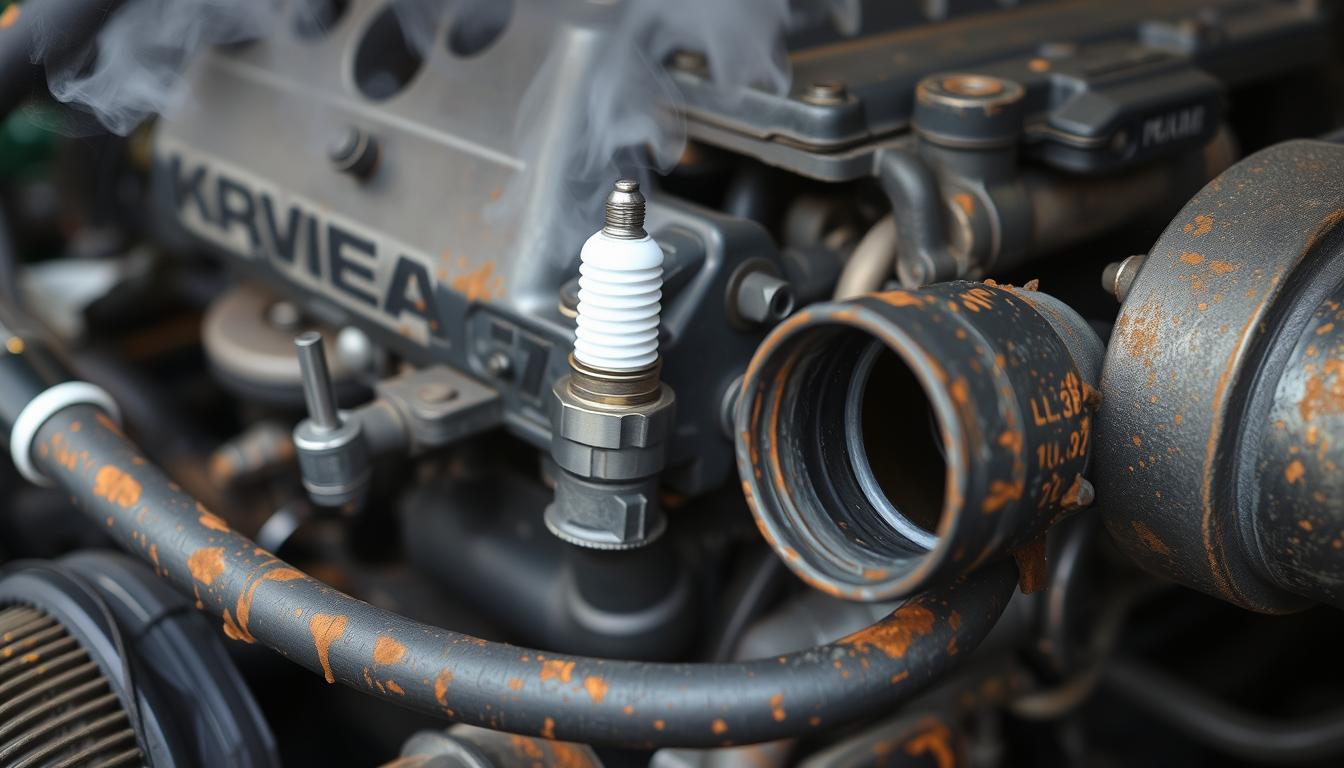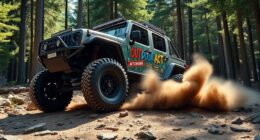At AP Tuning, success starts with understanding your vehicle and goals, using precise diagnostics to establish baseline performance. We develop custom strategies, combining modifications and expert ECU remapping to maximize your car’s potential. Our thorough dyno testing confirms power gains and smooth drivability. Customers rave about noticeable improvements and tailored support. If you want to see how our precise tuning can transform your ride, there’s more to explore just ahead.
Key Takeaways
- AP Tuning customizes each project based on thorough vehicle assessment and customer goals, ensuring tailored performance improvements.
- Precise ECU flashing and dyno testing optimize power, torque, and fuel efficiency, highlighting technical expertise.
- Successful projects incorporate aftermarket modifications like exhausts and intakes, harmonized through expert tuning.
- Continuous customer feedback confirms satisfaction with seamless performance gains and reliable drivability.
- AP Tuning stays industry-leading by integrating advanced diagnostics and expanding services into emerging vehicle technologies.
Overview of the Vehicle and Customer Goals
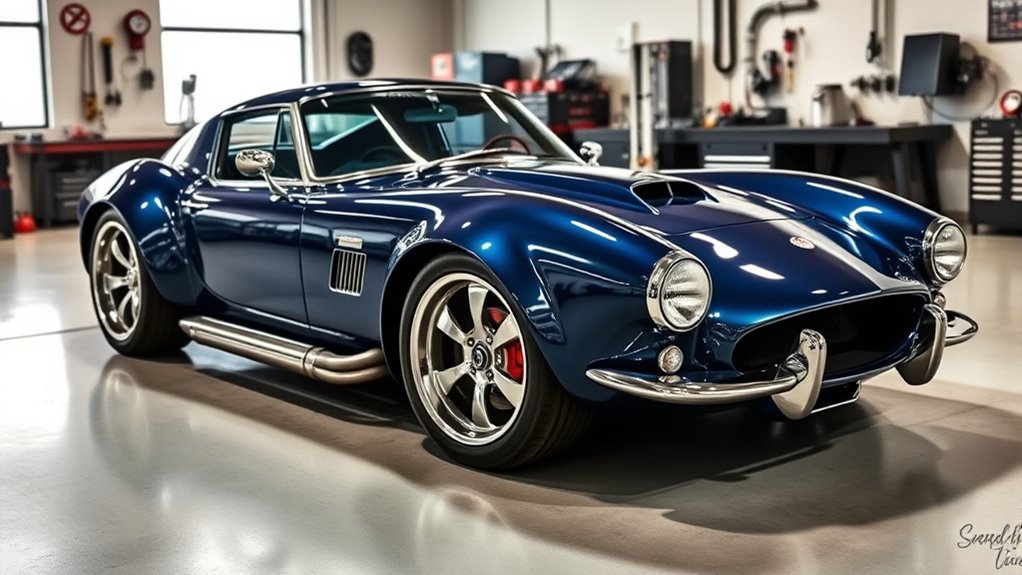
Have you ever wondered what makes each vehicle unique when it comes to tuning? Every car, from sedans to sports models, has distinct performance potentials based on engine size, type, and fueling systems. Engine configurations vary widely among vehicles, influencing tuning possibilities. Your vehicle’s chassis and suspension also influence handling and stability, shaping the tuning approach. Knowing your car’s current horsepower and torque helps set realistic goals, whether for daily driving, racing, or off-road adventures. Previous modifications can affect how your vehicle responds to new upgrades, so understanding its history is key. Your personal goals, such as boosting acceleration, improving handling, or enhancing aesthetics, guide the tuning process. Budget constraints and legal requirements further refine your options, ensuring the final result aligns with your expectations and usage needs. Additionally, considering the vehicle’s weight distribution can optimize suspension tuning for better overall performance.
Furthermore, understanding the specific model’s performance capabilities allows for more tailored tuning strategies that maximize your vehicle’s potential.
Initial Assessment and Baseline Performance
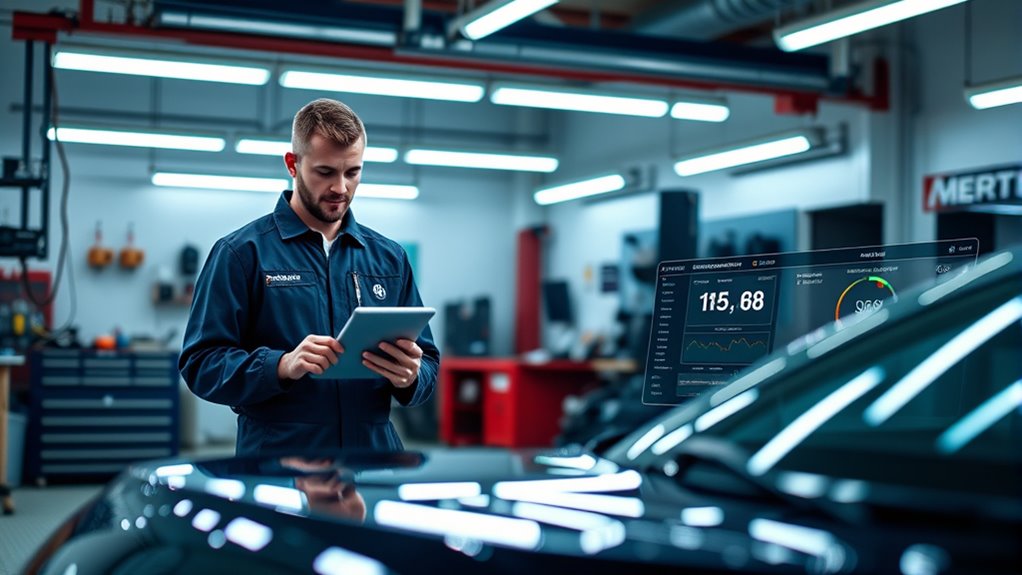
Understanding your vehicle’s current performance is the essential first step in any tuning project. It provides a clear picture of where improvements are needed and sets realistic goals. During initial assessment, you’ll conduct dyno testing to measure baseline horsepower and torque, evaluate fuel efficiency, analyze throttle response, and review engine parameters like air/fuel ratios and ignition timing. Collecting customer feedback helps pinpoint specific issues or desired upgrades. Subtopics like Tuning Products and Compatibility highlight the importance of precise data to ensure the correct tuning approach. Key points include: — Establishing accurate performance benchmarks — Identifying existing inefficiencies — Gathering subjective driving insights — Setting achievable improvement targets. Using tools like dynamometers, OBD-II scanners, and data loggers ensures precise data collection, which is especially important for understanding tax implications and planning your overall strategy. Additionally, understanding performance metrics enables you to tailor modifications more effectively, aligning improvements with your vehicle’s capabilities and your goals. This foundation guides effective modifications and manages expectations, leading to a successful tuning outcome.
Custom Tuning Strategy and Modifications

Building on your initial assessment, developing a custom tuning strategy involves tailoring engine parameters to match your vehicle’s specific modifications and driving goals. You adjust factors like air/fuel ratios, ignition timing, and boost levels to optimize performance and efficiency. Full ECU access enables precise adjustments and diagnostics, ensuring your tune is optimized for your setup. If you’ve added forced induction, your tune manages boost pressure to prevent damage. Upgrades like new internals or high-octane fuels require precise adjustments to maximize power and prevent knocking. Aftermarket exhausts and intakes also demand tuning to ensure airflow is optimized for gains. Implementing proper performance tuning techniques ensures that all modifications work harmoniously. Using tools like ECU software or dyno testing, you refine these settings, validating improvements in horsepower, torque, and fuel economy. Establishing a comprehensive tuning plan helps coordinate all modifications for optimal results. This focused approach guarantees your modifications work harmoniously, delivering the best possible performance tailored to your driving style.
Execution of the ECU Flash and Tuning Process
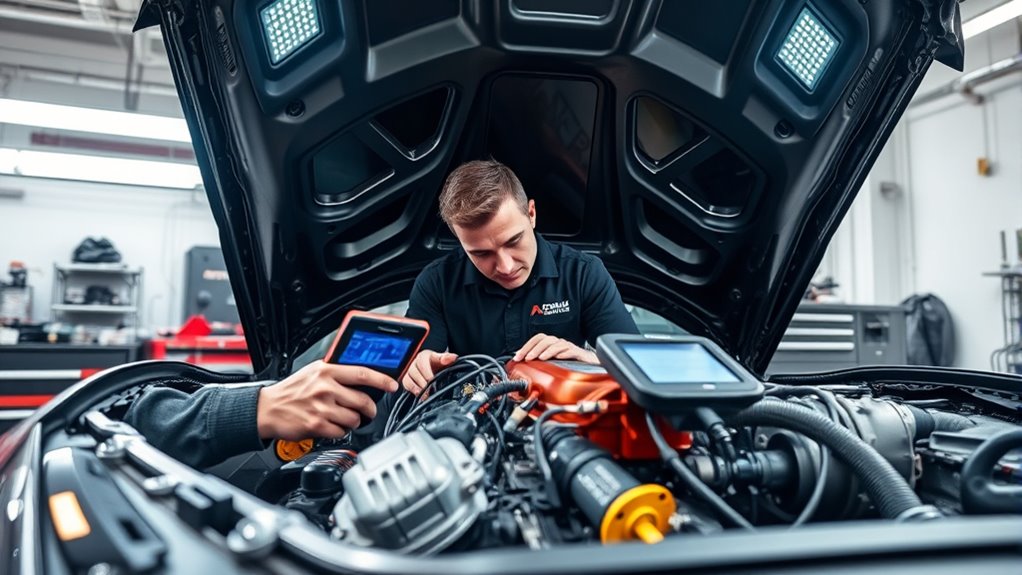
Executing the ECU flash and tuning process requires careful preparation and precise execution to guarantee safety and effectiveness. First, back up your ECU data to assure you can restore it if needed. Verify file integrity and check checksums before proceeding. Using a best free keto diet app or similar tools can help you monitor system parameters and ensure optimal configurations. Ensuring proper data backup is critical to prevent data loss during the process. Use specialized tools like EcuFlash and dedicated cables to establish stable communication, whether through the OBD2 port or direct ECU access. During flashing, follow incremental write cycles to prevent corruption. Be aware of manufacturer-specific encryption and protocols that might require bypassing security features. After flashing, run diagnostic scans to spot any error codes. Finally, perform a road test to confirm drivability and safety. Remember, attention to detail is crucial to avoid bricking the ECU or triggering warning lights.
Dyno Testing and Performance Metrics
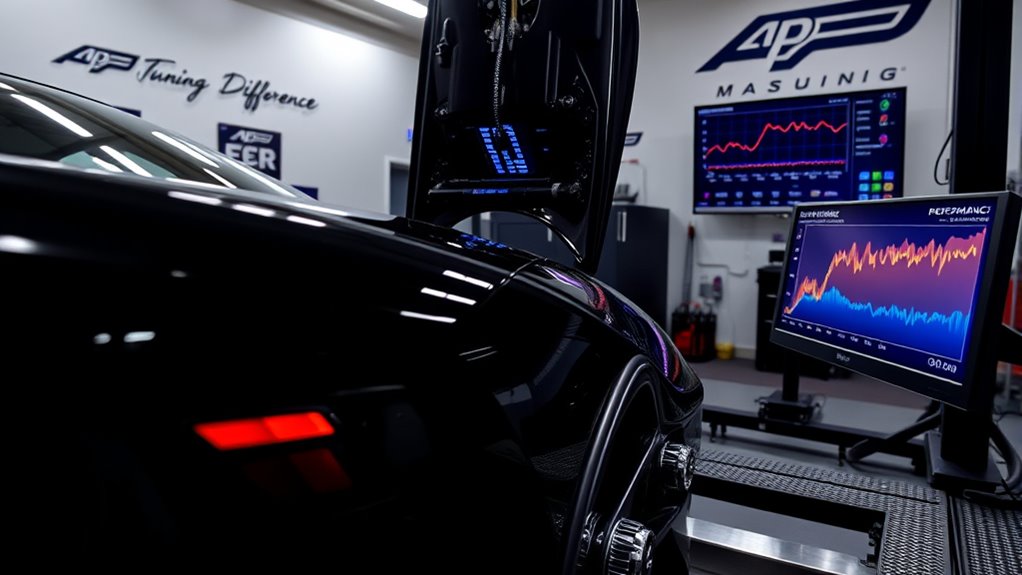
Have you ever wondered how automotive enthusiasts and engineers accurately measure an engine’s performance? Dyno testing provides precise data by measuring torque and rotational speed, which helps calculate horsepower and efficiency. On a dyno graph, engine speed (RPM) appears on the X-axis, while power output is shown on the Y-axis. This allows you to see how horsepower and torque vary across different RPMs. Here’s a quick overview:
| Measurement Type | Key Insights |
|---|---|
| Power Curves | Show horsepower changes during RPM shifts |
| Torque Curves | Indicate twisting force for acceleration |
| Air-Fuel Ratio | Optimize combustion efficiency |
| Drivetrain Losses | Evaluate overall drivetrain efficiency |
Dyno testing offers repeatability, helping you fine-tune performance and diagnose issues with clarity. Engine dyno testing is crucial for assessing engine performance outside the vehicle, providing a controlled environment for measuring power accurately. Understanding performance tuning laws and principles can further enhance the effectiveness of your testing process.
Final Results and Customer Feedback
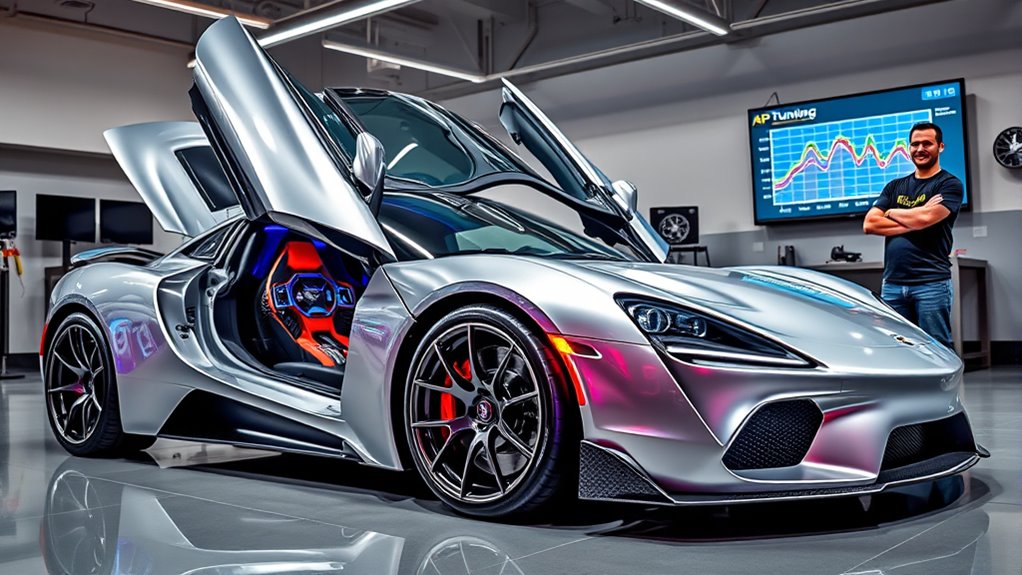
After completing the dyno testing phase, the focus shifts to analyzing the final results and gathering customer feedback to assess overall success. You’ll find that most clients report noticeable improvements in power, throttle response, and fuel efficiency. Additionally, our solutions are designed to support performance optimization and ensure seamless integration with existing vehicle systems. Our personalized tuning solutions, including custom maps and full performance adjustments, consistently meet or exceed expectations. Customers appreciate our transparent communication and the ability to remotely optimize their vehicles. Key highlights include: – Improved engine performance and efficiency – Enhanced driving experience with custom flame maps – Satisfaction from tailored tuning solutions – Positive feedback on ongoing support and communication This feedback confirms that our innovative techniques and precise adjustments deliver real results, strengthening trust and loyalty among clients.
Key Takeaways and Future Opportunities
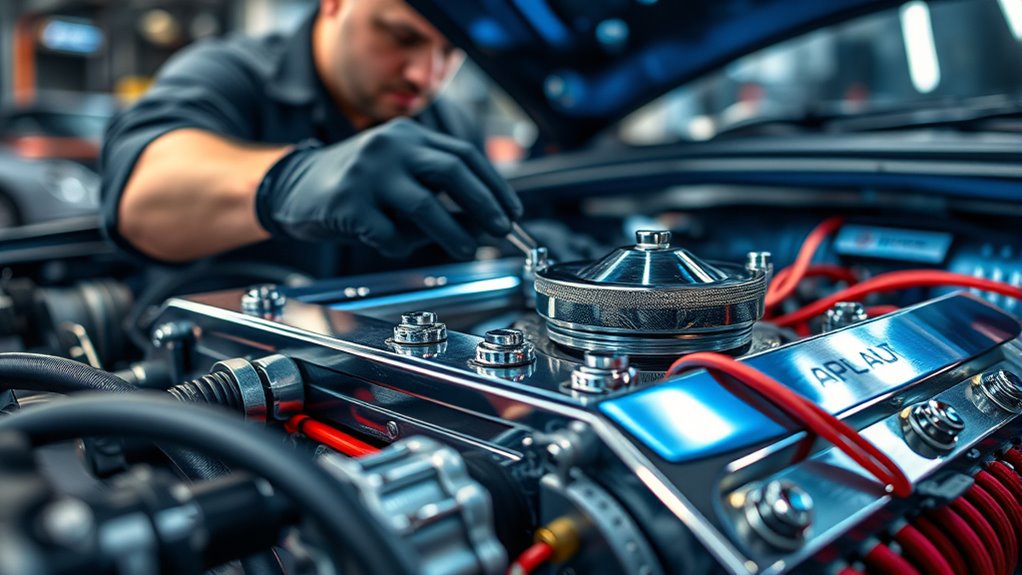
Building on our successful tuning projects, key takeaways highlight the importance of precise engine adjustments, such as air/fuel ratio and ignition timing, which deliver both power and efficiency gains. You should prioritize dyno tuning for accurate measurement and validation of performance improvements. This focus on calibration ensures optimal engine performance. Remote tuning capabilities offer flexibility and convenience, enabling real-time adjustments regardless of location. Future opportunities include expanding our data-driven tuning archives and integrating advanced diagnostics, like AI-driven ECU mapping. Developing partnerships with performance parts manufacturers can enhance service bundles. Additionally, focusing on combustion optimization supports better fuel economy alongside power. We aim to broaden our reach through scalable remote infrastructure and explore new markets, including electric and hybrid vehicle performance modifications, ensuring we stay at the forefront of the industry.
Frequently Asked Questions
What Hardware Tools Are Required for the ECU Flashing Process?
To flash an ECU, you need the right hardware tools. Start with an OBD-II diagnostic tool like BFlash or Flex V2 for direct port access.
For advanced repairs, consider bench-tuning equipment such as MAGPRO or FlexBox.
If you work on multiple vehicles, master/slave systems like Autotuner or CMDFlash are ideal.
Additionally, J2534 adapters like Mongoose-Plus support third-party software, while specialized flashers target specific brands.
Choose tools based on your vehicle type and tuning needs.
How Long Does the Entire Tuning Process Typically Take?
The tuning process usually takes anywhere from a few hours to several weeks, depending on vehicle complexity and your tuner’s experience.
You’ll start with preparation, datalogging, and engine checks, then move into actual tuning. Datalogs like idle, MAF calibration, and WOT are essential for accuracy.
Keep in mind, DME tuning often requires physical presence and can take about three weeks, with multiple tune iterations to reach your performance goals.
Are There Any Warranty Considerations After Tuning?
When you consider warranty impacts after tuning, keep in mind that manufacturers can deny claims based on modified ECU parameters, especially for powertrain, emissions, or hybrid components.
Using reversible tunes, documentation, and communicating with your dealer can help protect your coverage.
Be aware that electronic scans and logs can reveal modifications, so choose tuning options carefully and consider extended warranties from specialized tuners to mitigate risks.
Can Tuning Be Reversed if Needed?
Did you know that nearly 60% of tuning modifications are reversible with proper documentation?
If you need to undo tuning, it’s possible—especially in software or electronic systems—by rolling back changes or restoring backups.
However, physical or complex system adjustments can be challenging and costly to reverse.
Always keep detailed records of your modifications; this makes reversing easier and safer if necessary.
What Support Options Are Available if Issues Arise Post-Tuning?
If issues pop up after tuning, you have several support options. You can reach out via email or phone for detailed help, or use live chat and social media channels for quick assistance.
Many tuning companies also provide troubleshooting guides, update services, and performance monitoring to address post-tuning problems.
Community forums and feedback channels let you share experiences and get advice from other customers or experts.
Conclusion
As you step back to admire the transformed vehicle, the road ahead feels alive with newfound power and precision. The engine hums a confident tune, echoing your journey from baseline to brilliance. Every curve and acceleration now reflects your vision, a symphony of engineering and passion. With this tuning project, you’ve unleashed more than just performance—you’ve ignited a sense of mastery that turns every drive into an exhilarating experience.
